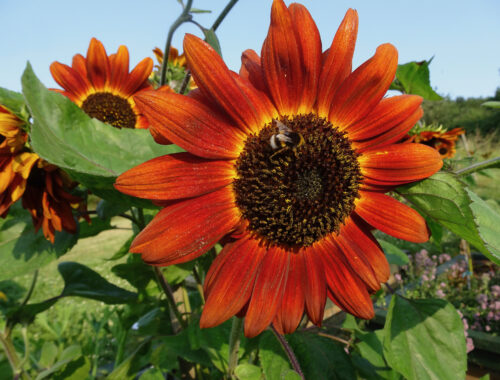First Six Years of the Garden
Year One in the Garden
We moved here in May 2013, into the cabin we built, and in the winter of 2014 we cleared about an acre of straggly pines, from a gentle south facing slope to the west of where we were renovating the old house.
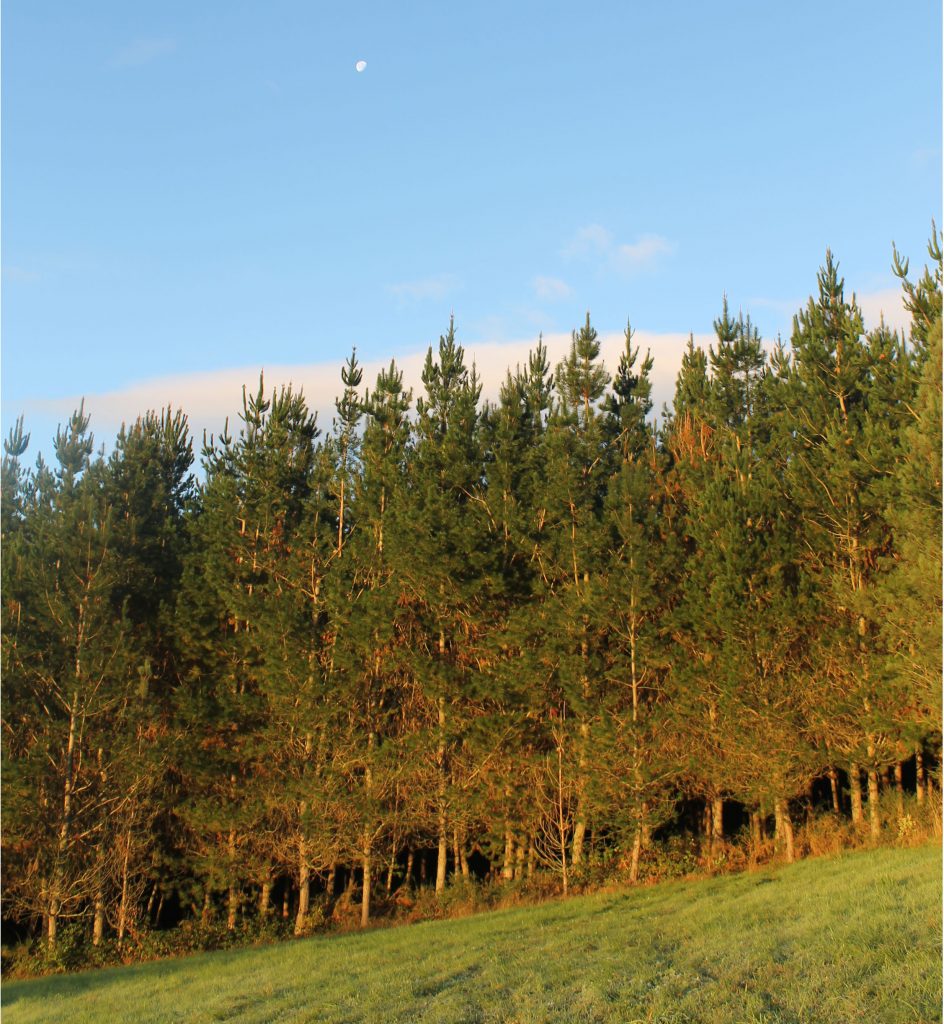
Situating the garden was a big decision. We considered putting it closer to the house, which would have been more convenient, but it wasn’t feasible with all the building work going on. These pines were planted too close together and weren’t very healthy, but they had protected the soil beneath with a good layer of pine needles and other organic matter. There was a small creek the other side of the pines, which we thought we might be able to divert for water, but unfortunately it dried up after we cut down the trees and the soil was heavily compacted by the machinery. Since those early days we’ve learned a great deal about water management for the garden, mulching and improving the soil.
The situation of the garden has given us great pleasure – the views are amazing. In the winter of 2018, after we’d finally cleared the rubble from the house renovation we put in some salad beds and tomato trellises closer to the house. That was a good move as we were able to put in better soil and it’s easier to take care of the more tender plants.
In the summer of 2014, we began laying out terraces using the chestnut beams from the old house. We then covered the ground with straw for the winter.

We had our first retreat in August 2014, with some great people and a lot of fun, including hay rolling from the field the other side of the house to the garden.
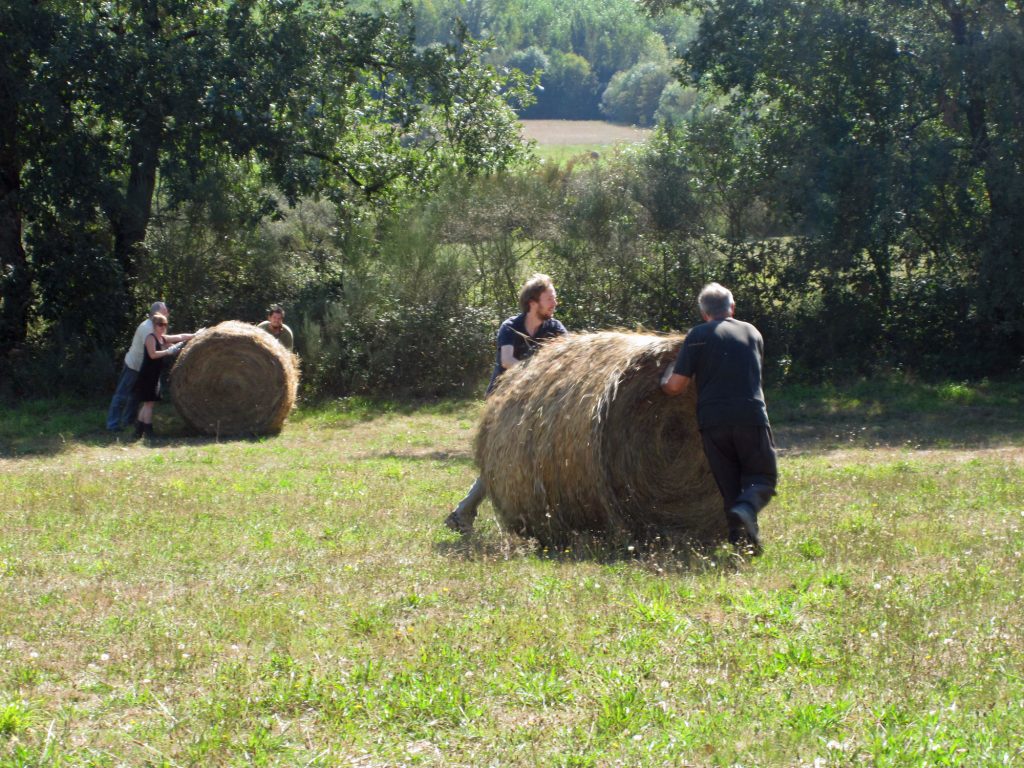
That first year we experimented with the Fukuoka method of natural farming. It was a near total failure. Perhaps it might work better in more fertile soil, or at least a garden that wasn’t already well-established with brambles and weeds. Anything that did sprout, was strangled or trampled before I could find it.
Our very first harvest was of knobbly carrots in September 2014, which was when we realized that our compacted clay soil needed some TLC.
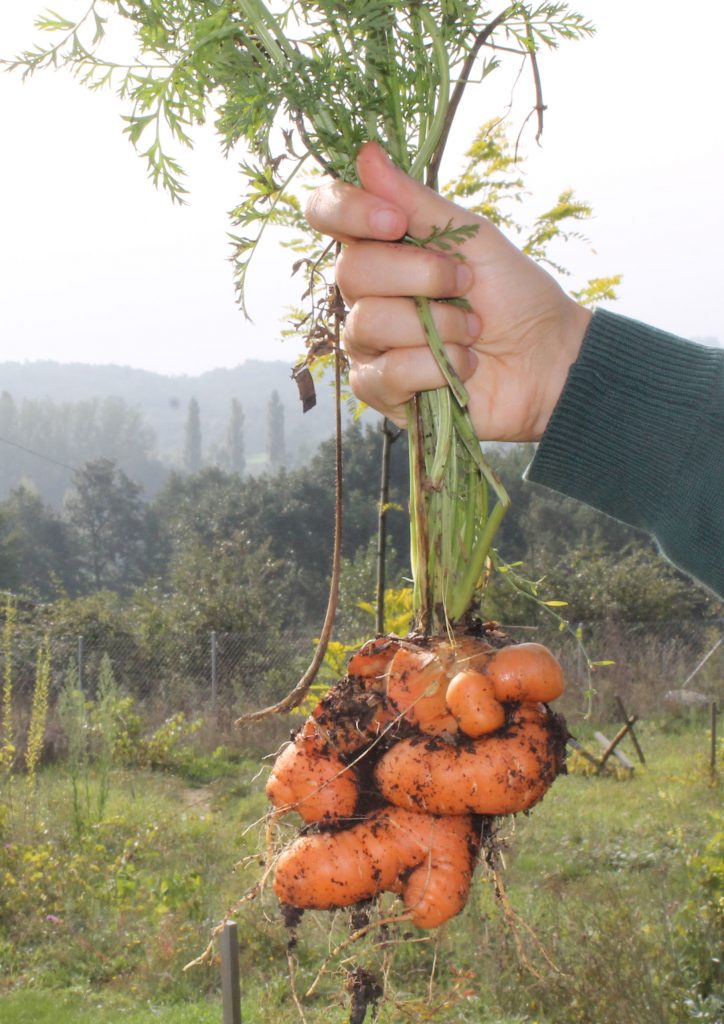
Year Two in the Garden
Over the winter of 2014/15 we dug out the natural pool a bit more and began laying out the beds.
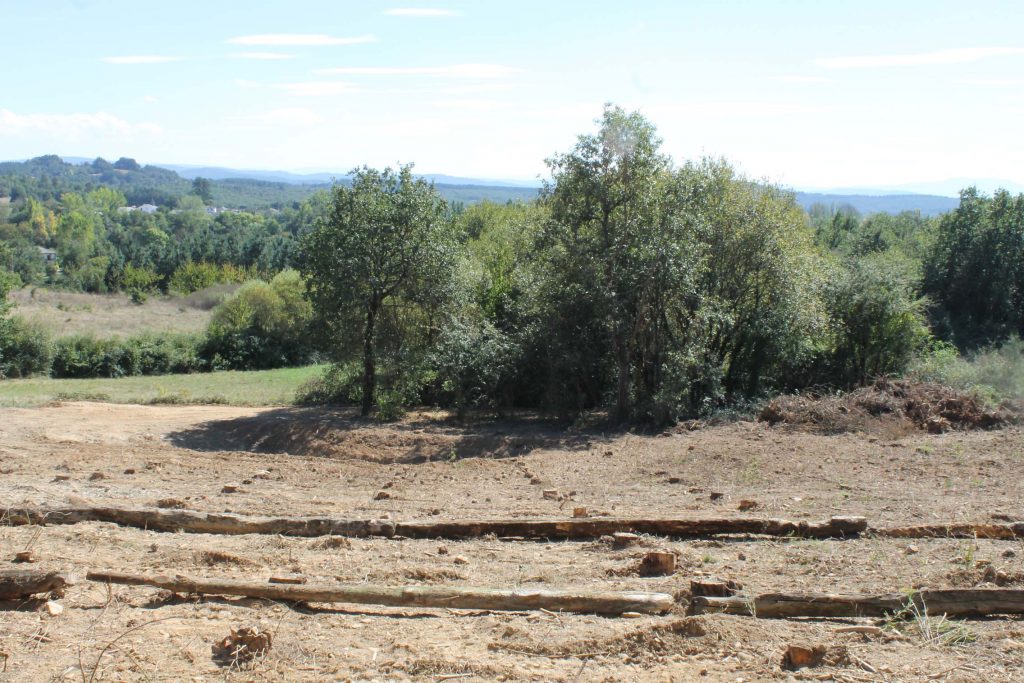
We also dug swales, in an attempt to keep more water in the soil. This was partly because we moved here in the wettest spring for 70 years! The track was a gushing wellie-deep river and the ground floor of the old house was flooded out. We were concerned about moving water away from the house and thought it would be a good idea to move it to the garden. So we dug ditches, put in drainage pipes and dug swales – then we had a drought.
It was somewhat gratifying to see the swales fill up in the spring of 2018, but we had a lot more work to do to keep sufficient water in the ground. We’ve lost too many young trees to drought. We’ve been off-grid since 2018, running on solar with a back-up generator and the system works really well, except for the fact that it’s a challenge to water the garden enough in the evening as the sun is going down. This year (2019) Dean put in a water tank that can be filled during the day, with a gravity feed water system for the garden that can be run anytime.
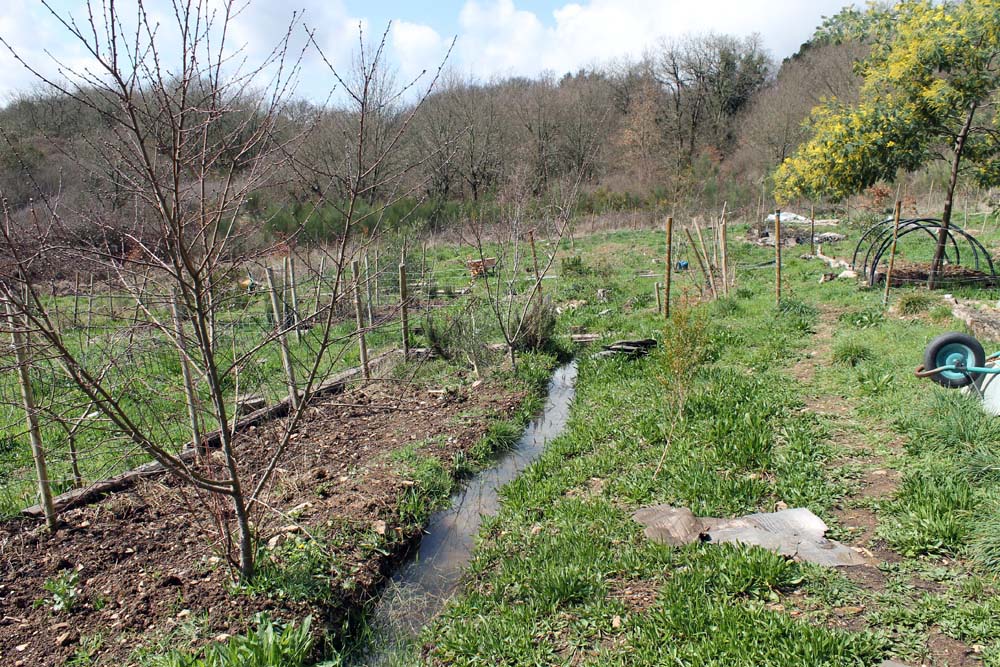
In 2015 we had broad beans, courgettes, tomatoes, carrots, broccoli and some potatoes. We would have had more potatoes and corn too, but the wild boar came and ate it all! After that, we had to fence in the garden to keep them out.
In the spring of 2015 we put in an asparagus bed and tasted our first asparagus in May 2018. Fresh asparagus, picked from the garden and tossed in a little oil and grilled, served with a sprinkle of salt, is nothing like you buy in a supermarket. In fact, all our home-grown really does taste better and is more satisfying.
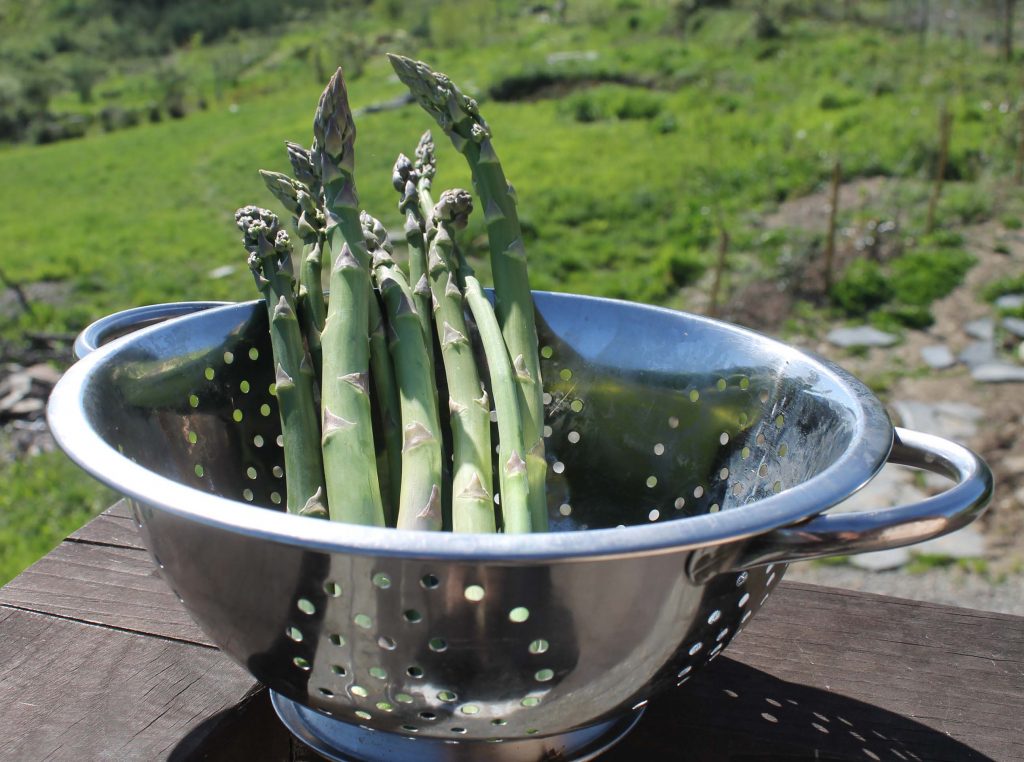
Year Three in the Garden
By 2016, I was beginning to think that I might have been a bit over-ambitious regarding the productivity of a food forest/permaculture garden. This was nothing like suburban gardening. The main tenet of permaculture is that you work less if you work with nature, and whilst that is true, the reality of it is entirely context dependent….and with clay soil, there is no avoiding hard graft. We love blackberries, but it took us two years to dig them out of the beds and they are still springing up all over the paths in between. As we are surrounded by woods and fields, there is never a shortage of opportunistic weeds. Yes, a weed is just another plant in the wrong place, but by the time we finished weeding one bed, the next one was smothered. The digging meditation is an excellent way to root out those unwanted suckers whenever they show – as above, so below!
We made the decision not to use manure, after realizing that I’d had enough of dealing with other people’s shit! It’s been a real challenge getting enough organic material in the soil, but I felt that using too much cow manure would upset the balance of the soil and bring in too many parasites. Although our yields were low initially, we have not had problems with parasites, bugs and slugs. We are now using indigenous microorganisms and just starting with biochar, and it’s working well. Technically, I would say our garden is a mix of organic polyculture and permaculture, not that it matters what you call it if it works!
Year three was the hardest year – lots of effort and not so much return. We decided to bring in some fresh energy with some summer volunteers.
Year Four in the Garden
Year four was more hard work, mulching, weeding and watering. The swales were not sufficient and we decided to test an exuding hose system. It worked well enough, but we needed to put in more lines. Getting more water to the garden was becoming a priority. We put a pump in the shallow well in the barn (that had been the only well water supply for the previous owners, the bucket and chain were still here) and ran a pipe to the garden. That well ran dry in August. 2016 was technically a drought here, with a relatively dry winter and spring and no rain at all in the summer. We needed a better solution, but it would have to wait for another year.
On the plus side, the volunteers that year were wonderful. Their work enabled us to catch up and even get ahead of the game, enjoy some excellent company and share the peace and beauty of this place with a lovely young couple. For them, the cabin and surroundings were the perfect getaway and space for intimacy, with each other and the land. They set the standard that we ask of from prospective volunteers.
With the extra boost of energy, I fell in love with the garden again. We went into winter without a mess of weeds laughing in the wind! And Dean and Jacob set up the chicken run, so we could finally get chickens. (We can’t let the chickens free-range, as the dogs will kill them.)
Year Five in the Garden
More volunteers – also wonderful and now firm friends! This was the year we began to make real progress. The garden began to look like a garden, instead of a heart-wrenching effort to scratch some vegetables out of the earth. We began boxing off the downward side of the beds, so they would hold water more effectively and more weeding and mulching.
This was the year we got our greenhouse. And what a beauty it is, lovingly and creatively built by Marcus and Dean, using what we had left from the house, with purchased roof panels and rafters.
Our volunteers also collected seeds and set up a seed bank. Most of our vegetables are now from our own seed.
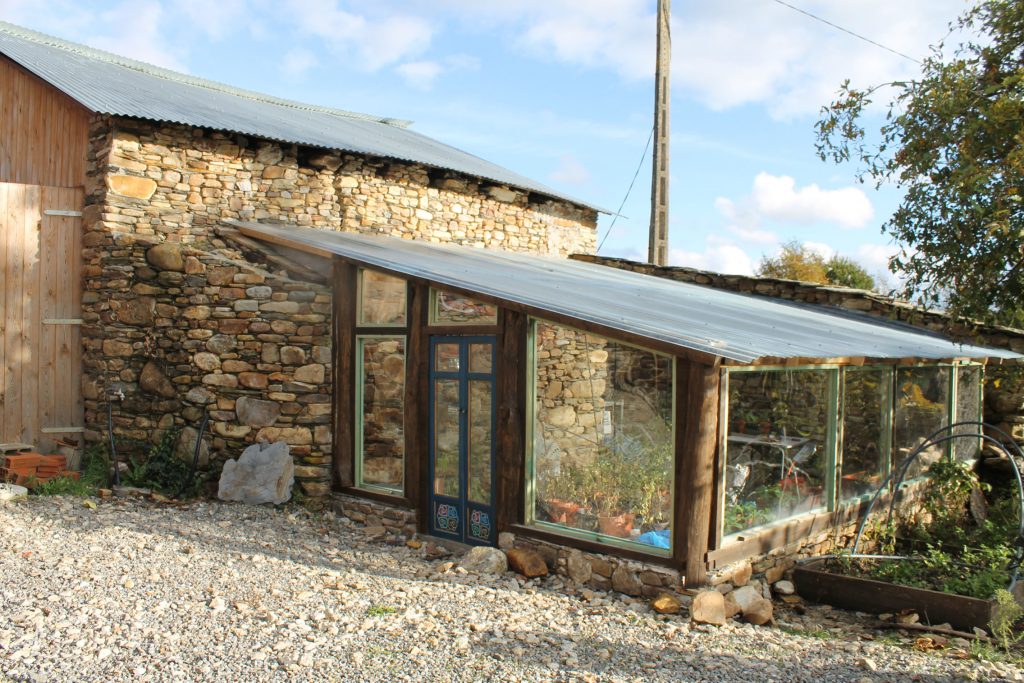
Year Six in the Garden
This year (2019) the garden is doing great! It’s providing us with almost all of our vegetables, everything except onions and potatoes. Potatoes are just a magnet for the wild boar and they are good and cheap to buy here. And onions just don’t do well in our soil.
I’ve started everything off in the greenhouse from our own seeds and planted out when the seedlings are strong enough. Sowing directly is still hit and miss and a bit of a waste of seeds and effort. But the greenhouse makes it all a pleasure. I can potter around when it’s cold and rainy and this year we had broad beans, cabbage, broccoli, beetroot and kale in spring. We’re eating lettuce, tomatoes, courgettes, aubergines, squash and garlic and I was able to give plants away. We’ll have fresh tomatoes through until early December, as some plants are in the greenhouse and frozen and dried all the way through to next summer. It’s August and I have kale, broccoli, cabbage and more beets in the greenhouse, ready to go out in a few weeks.
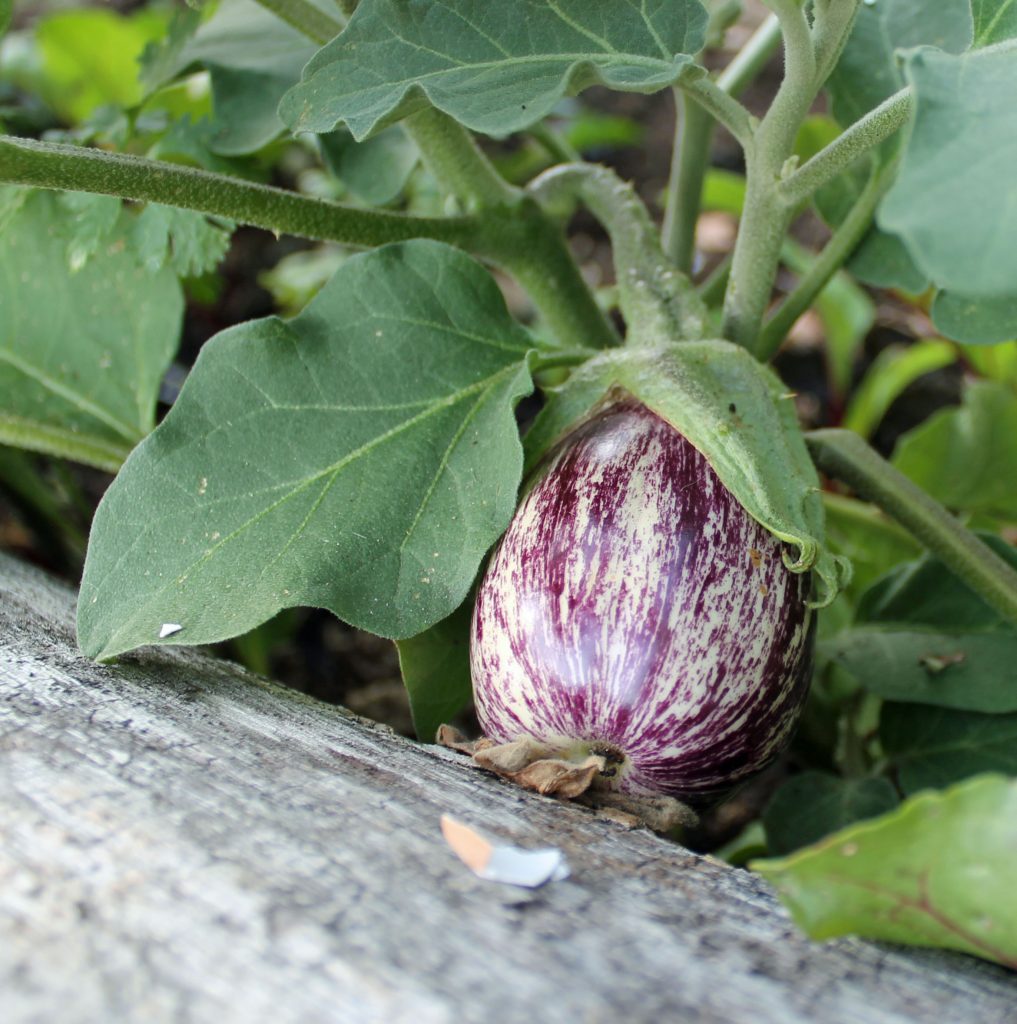
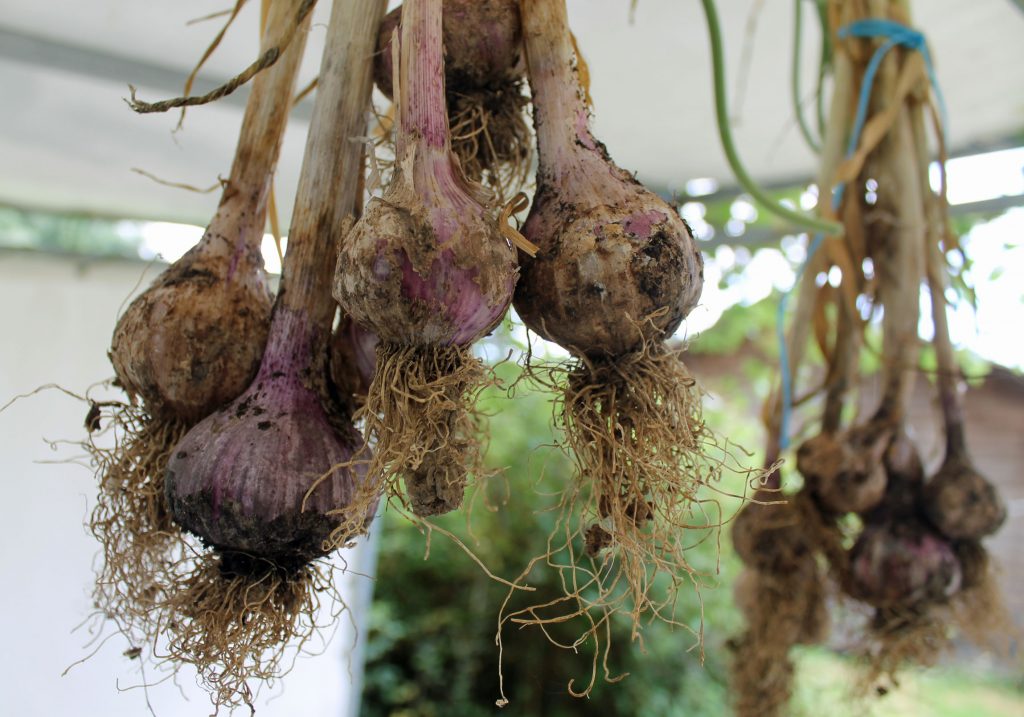
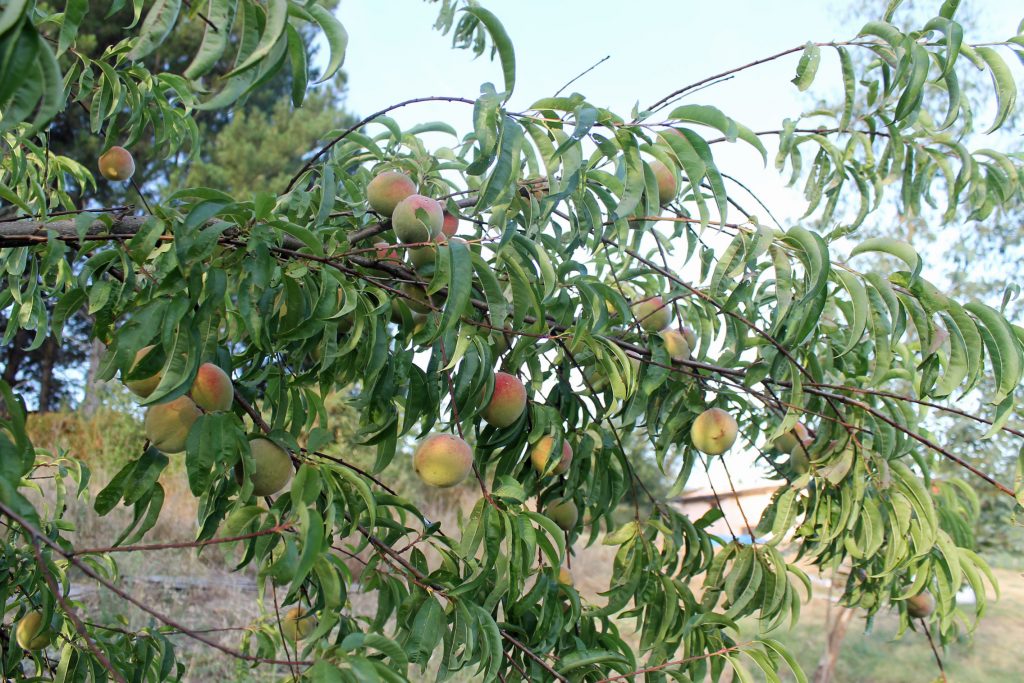
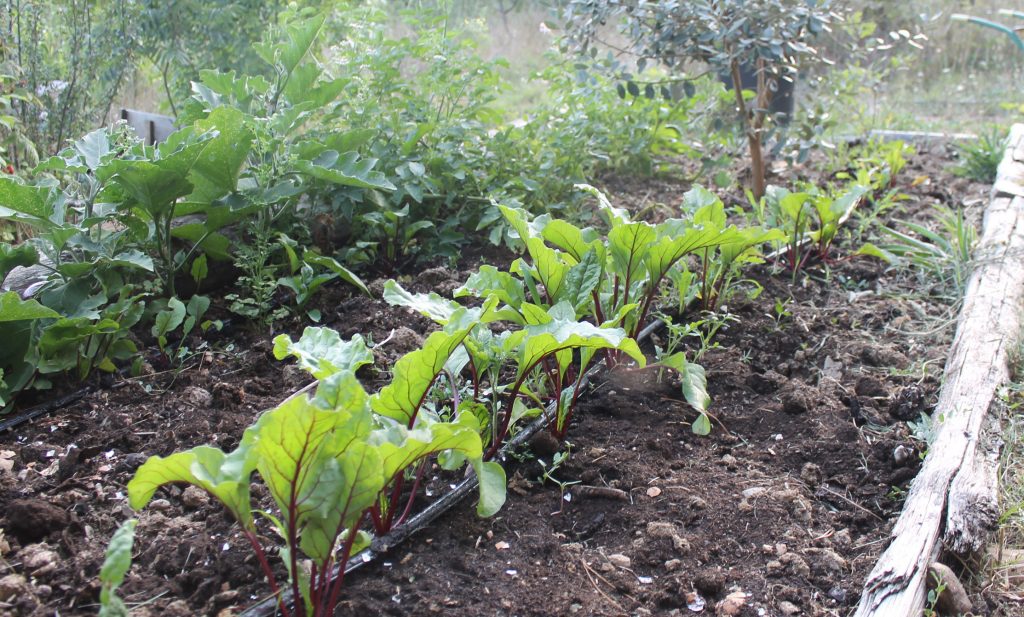
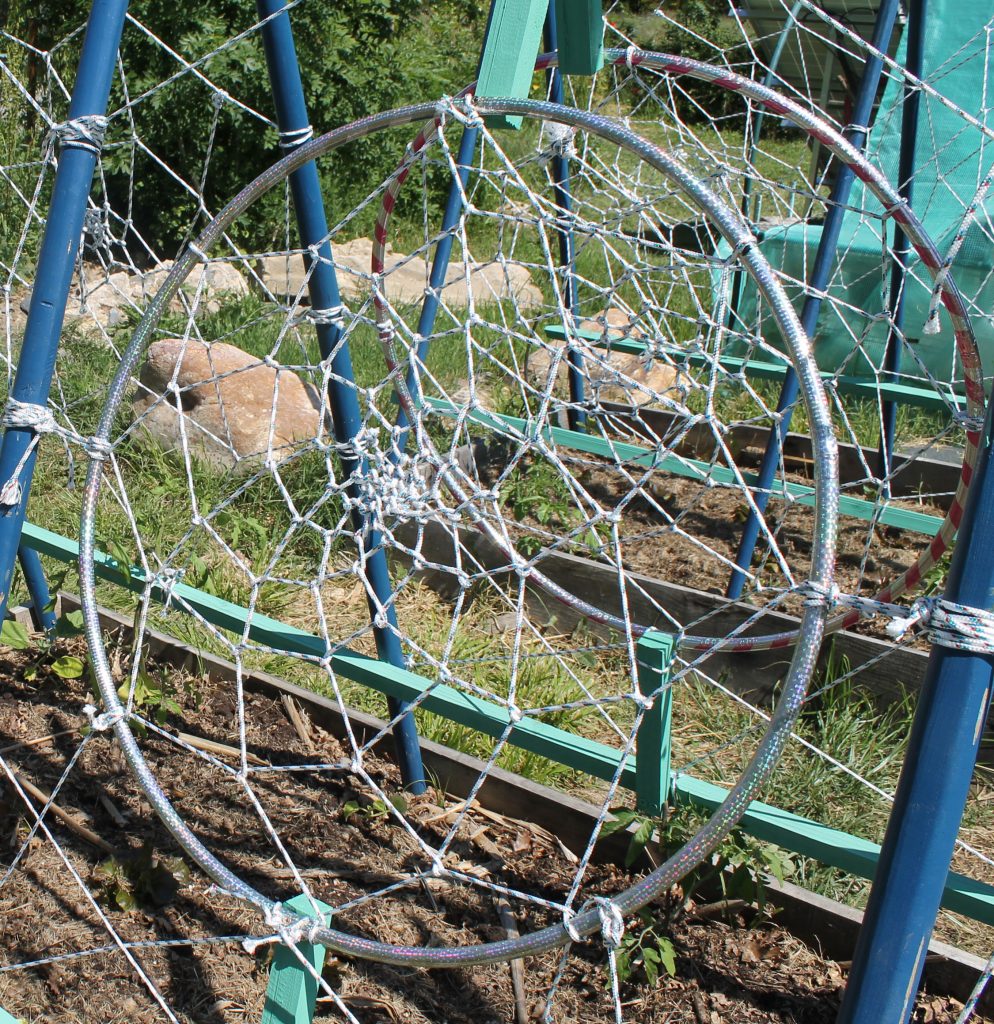
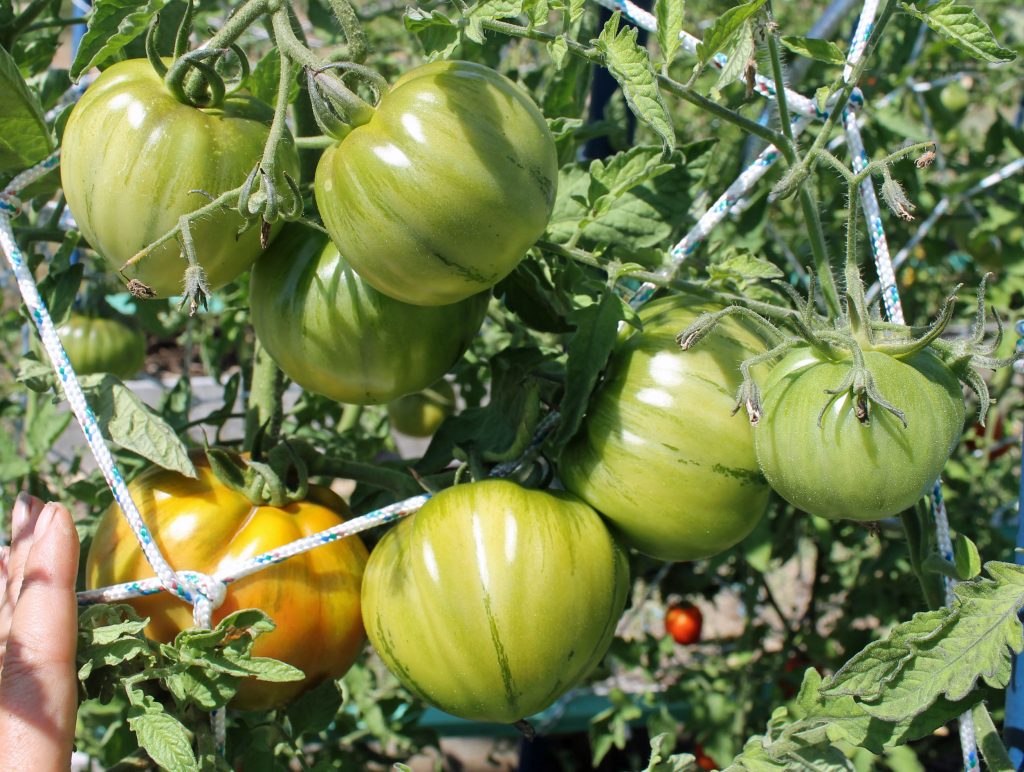
The big project this year was the water tank and exuding hose irrigation for the garden. Dean got it finished by the end of May, just in time for the hot spell. It is a luxury. It’s a 10,000L tank and we have three water structuring disks in it to keep the water fresh. It means we can water the garden and run the dishwasher or have a shower at the same time – the kind of things you have to juggle when you’re off-grid. It’s also meant that I can begin to plant flowers around the house, as they need watering in the evening too.
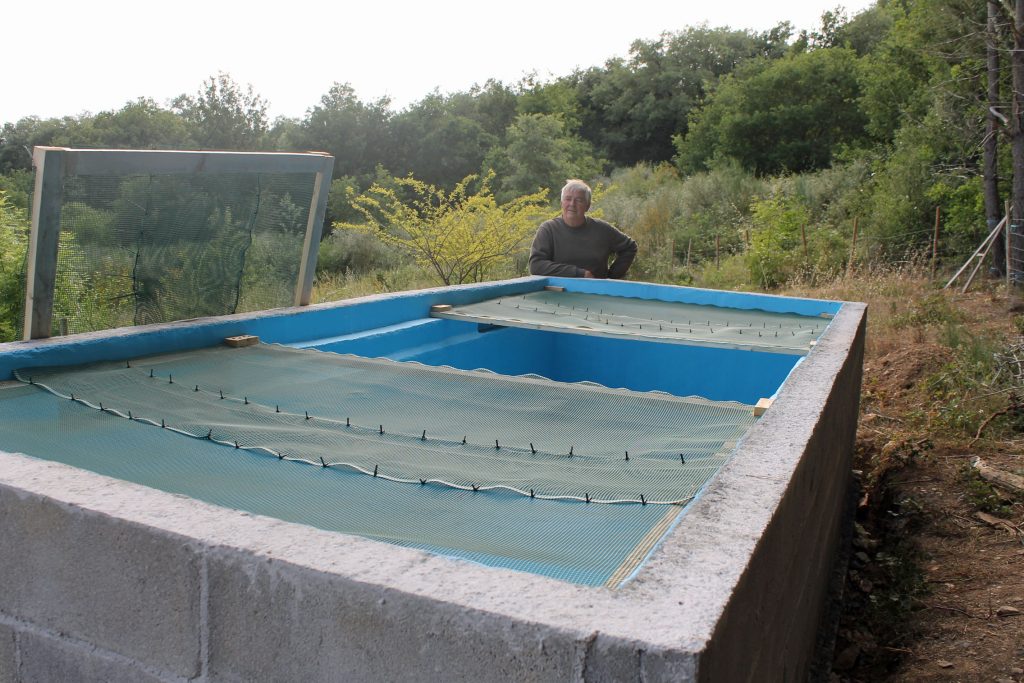
Of course, there’s always more to do, but I’m really happy with what we’ve learned and what we’ve achieved in six years!
Killing Time with the Quantum Pixies
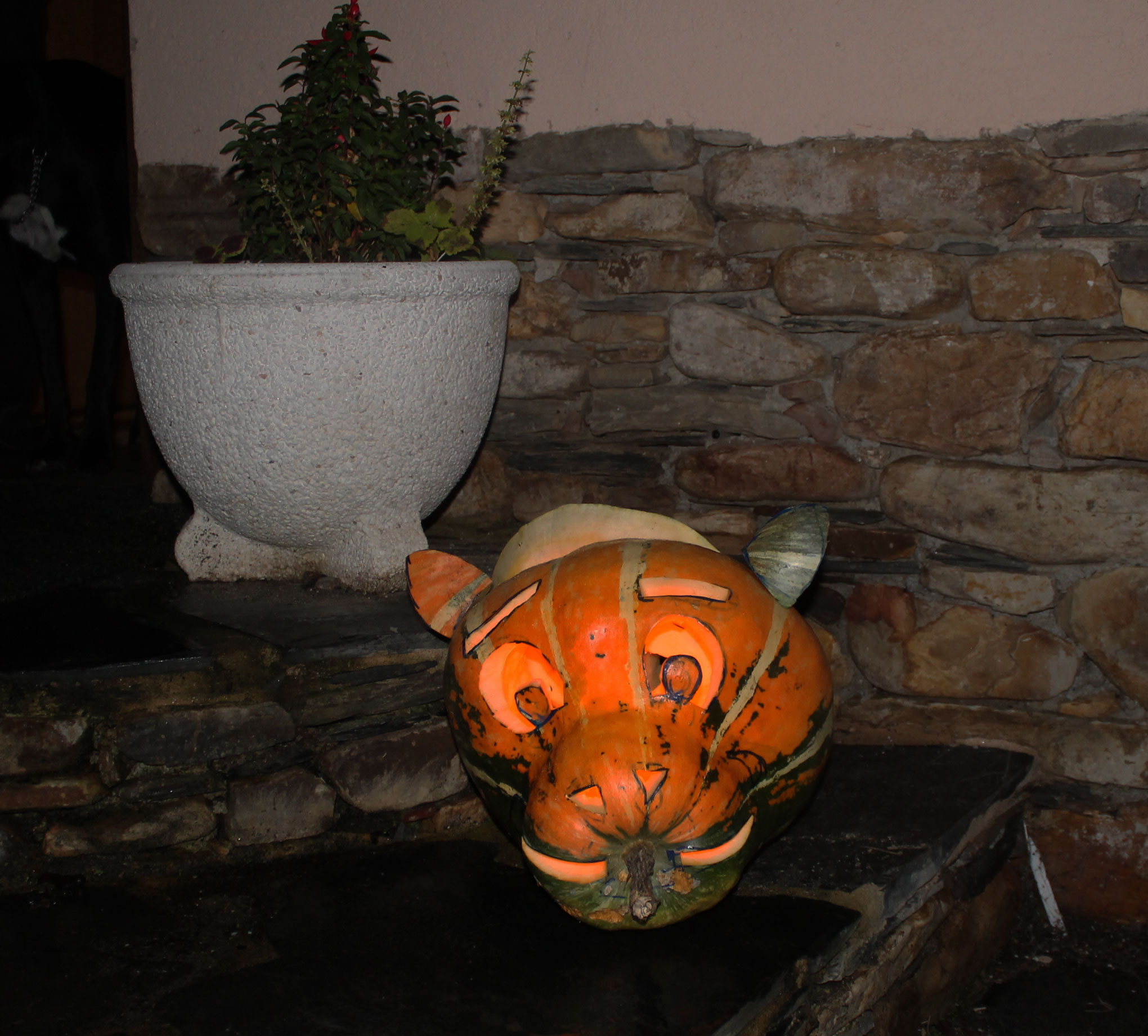
The Alchemical Pumpkin
You May Also Like
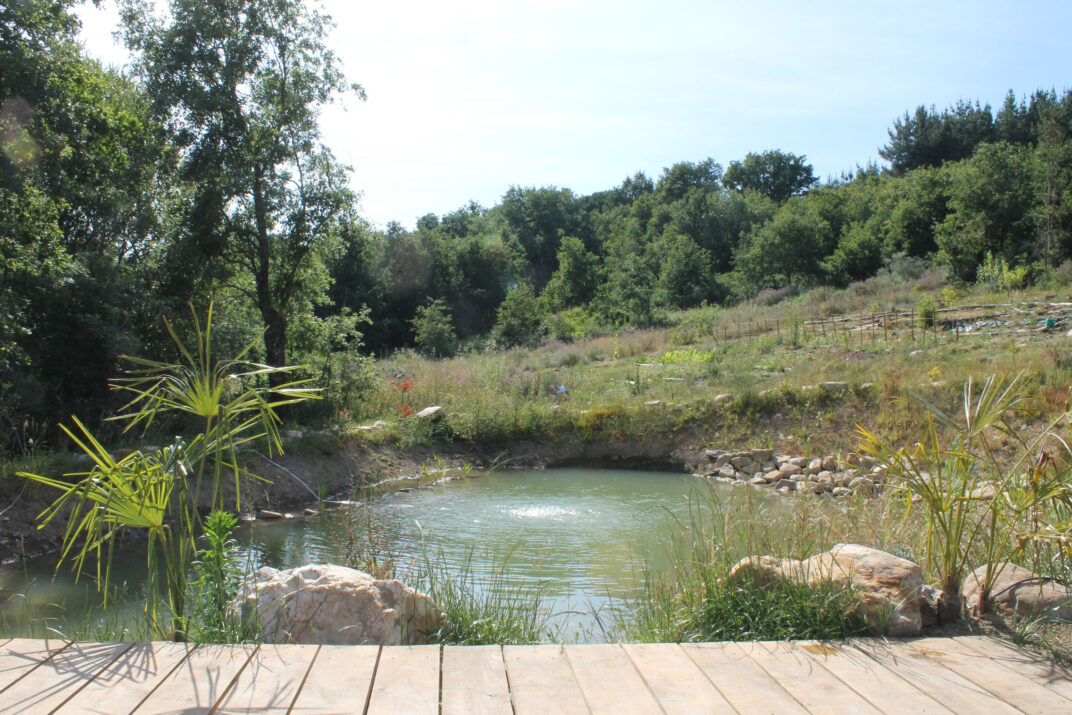
Water Management and Dealing with Your Own Shit
March 15, 2018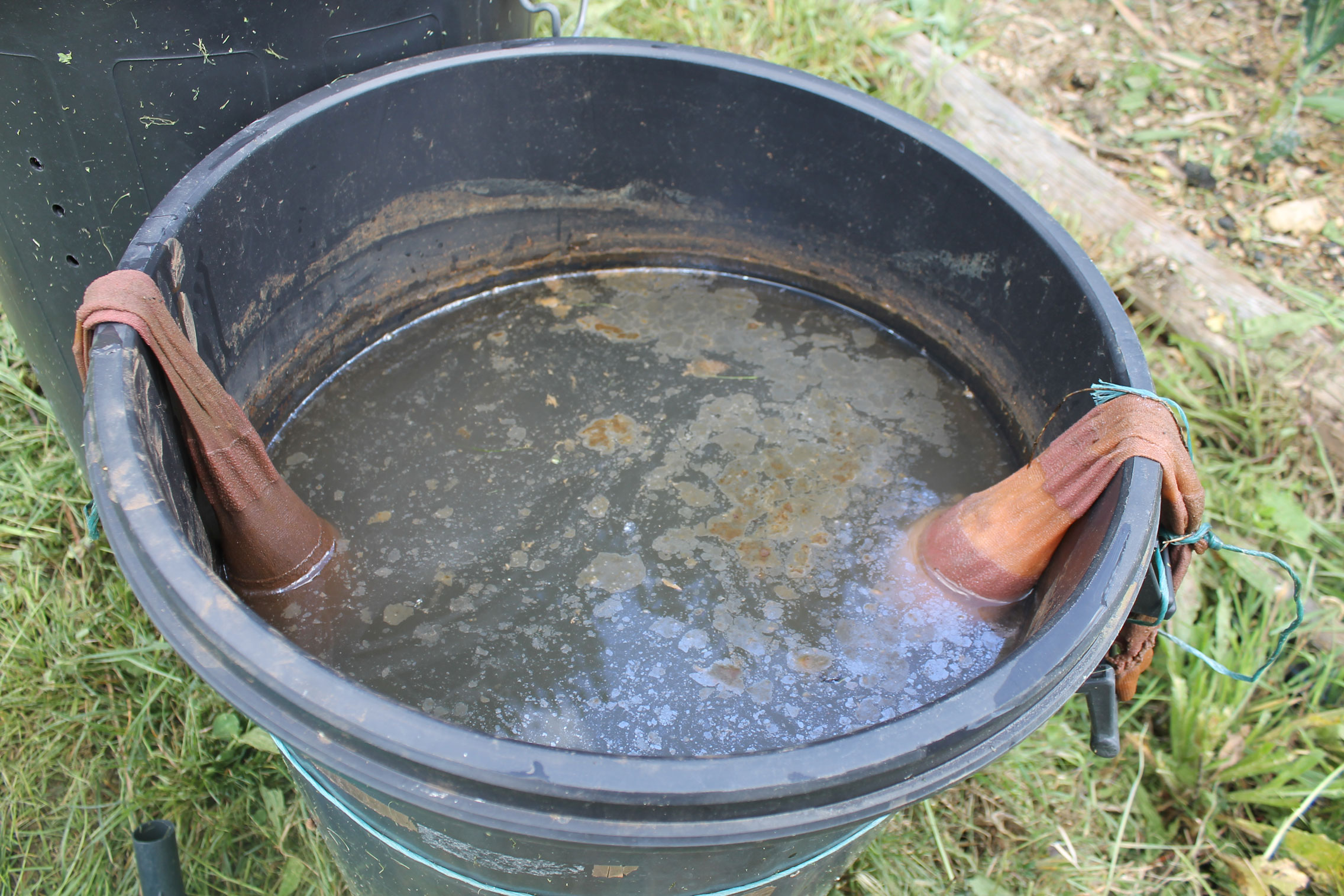
Dirt Cheap Fertilizer: micro-organisms
April 28, 2020